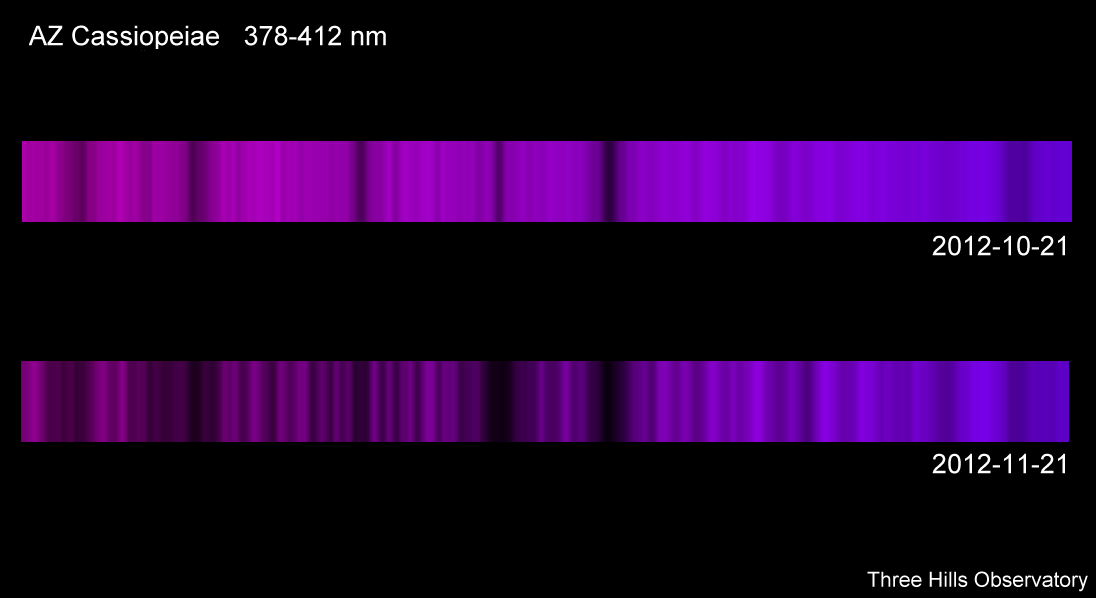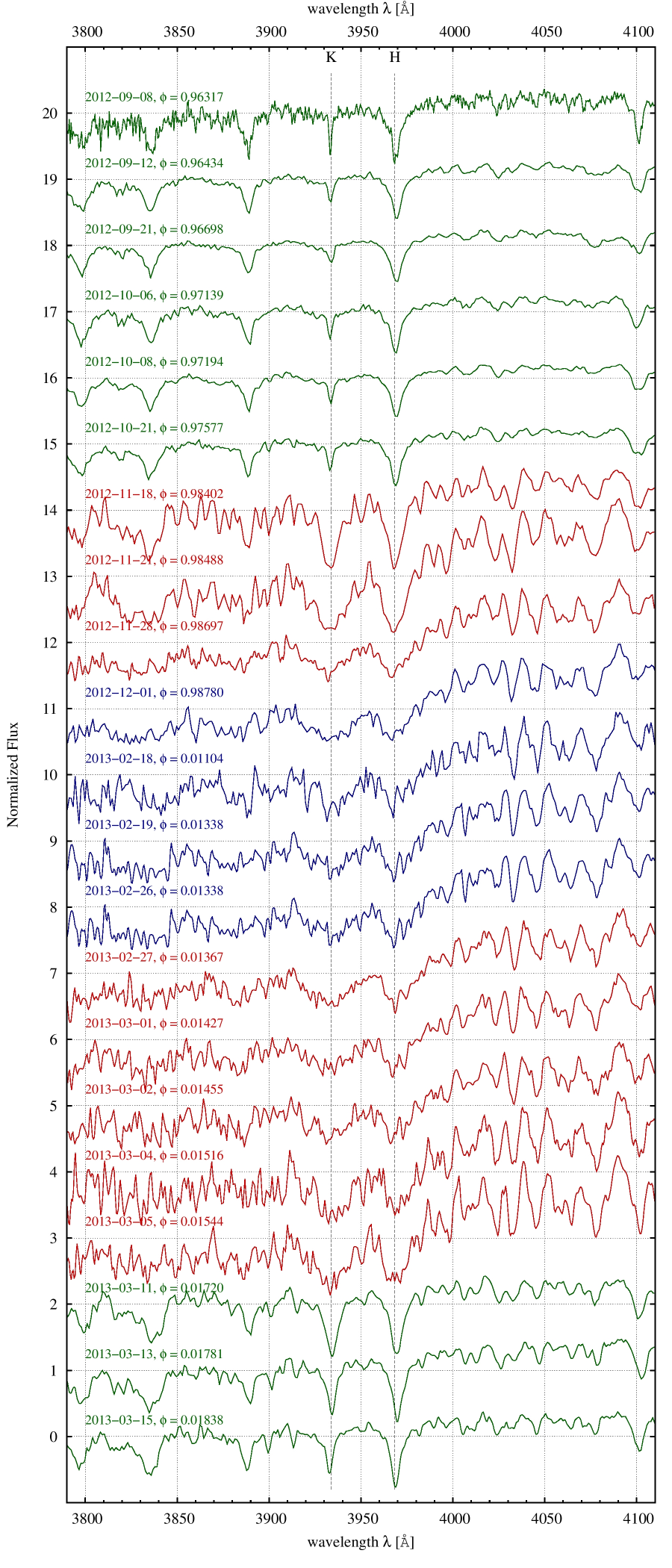
More information on the campaign here
http://www.astri.uni.torun.pl/~cgalan/AZCas/
http://www.astrosurf.com/aras/surveys/azcas/index.htm
http://www.spectro-aras.com/forum/viewforum.php?f=25
Changes during eclipse
The cool (spectral type M) giant star eclipses the much smaller hot B star. During ingress and egress we see the light from the B star filtered through the tenuous outer regions of the M star. The effects on the spectrum are most pronounced at shorter wavelengths where the B star is brightest and the M star is dimmest. During eclipse the magnitude in this region drops to around 12 which, when coupled with the low spectrograph and camera efficiency at these wavelengths, makes it a difficult target for spectroscopy with small aperture telescopes. (Integrated exposure times of up to 6 hours were used but even so the SNR during eclipse is still low below 3900A)
The results below show the evolution of the spectrum in the region around the Calcium H K lines. Green - outside eclipse, Red - ingress/egress, Blue - during eclipse
The transition of the Ca lines from narrow to broad, the loss of the H Balmer lines and the increase in relative intensity of numerous other metal lines are obvious as the B star component of the spectrum, dominant outside eclipse, disappears leaving the M star spectrum.

These results were presented by Cezary Galan at The Scientific Application of Small Telescopes, Krakow May 2013
The full presentation (in Polish) can be downloaded here